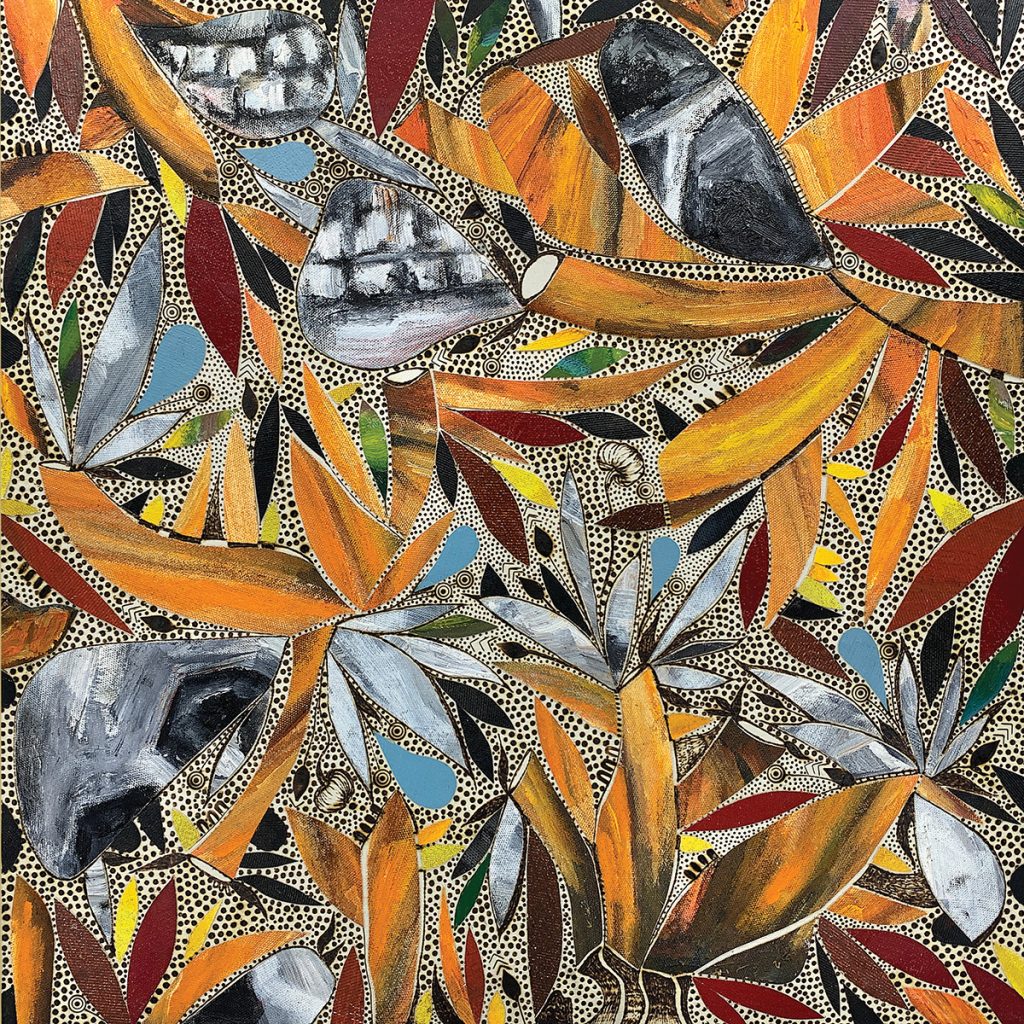
Nabil El Jaouhari prefers the term “reconstruction” to “collage.”
Portrait by Evan Anderson
Nabil El Jaouhari says growing up in the mountains outside of Beirut, Lebanon, he was the child who stayed inside to doodle. In the summer, he accompanied his father to the workshop where he made wicker and rattan furniture for well-to-do clientele.
Both parents supported his decision to go to Lebanese University Beirut for fine arts, a four-year program that studied all the disciplines from art history to making pigments. His undergrad project was based on Polaroids his father took over the years the country was engaged in civil war. “He was a terrible photographer,” El Jaouhari says fondly. “He would chop off an arm, or half a face, so they made interesting compositions. I turned them into paintings using multimedia techniques like transfers, airbrush, and prints, adhering them onto the surface.”

He can look at those pieces and see glimpses of the work he’s doing now in Asheville, where he moved this year, a Masters in painting and printmaking from the University of Missouri in hand, and experience casting molds for large bronze sculptures by Brett Grill.
For his current work for Mark Bettis Studio & Gallery, El Jaouhari can also credit his mother, who saved the hundreds of studies, still life, and landscapes he had done at Lebanese University. “They were stacked like 4’ deep against the walls, and I knew I needed to do something with them,” he recalls. “Since my Polaroid project was about memory, I wanted to play with that idea of the memory of those paintings in new paintings.”

He demurs from the label of collage and describes his current work as reconstruction. “I use my old paintings and prints as well as making new paintings with the purpose of being deconstructed and then reconstructed into another work.” In keeping with the concept of memory, he notes that immigrants in particular remember things in fragments, due to displacement. “The actual visual cues are not there anymore, but you see things that remind of you other things.”
During a visit to see a Lebanese friend living in Asheville, the local mountains reminded him so much of his home in Lebanon that he became intrigued by the area; representation by Mark Bettis and space to work in the River Arts District gallery convinced him to move.

“I started putting wallpapers on a panel, then I would wrap that with canvas, paint on it, and then cut it to reveal the wallpaper underneath.” He began applying the woodburning he first explored in Missouri to his new pieces and is now also using torch and chemicals to do specific burns on the panels before they are wrapped. “I am like a pyromaniac,” he admits with a laugh.
His reconstructions have sparked intense interest from collectors who have purchased existing work and commissioned pieces as well. “It is really a dream come true,” he says. “Getting to go into people’s homes to hang a painting is the most beautiful feeling. To get to a point where someone wants to live with your art is the biggest reward as an artist. “

Photo by Evan Anderson
Nabil El Jaouhari, Asheville. The artist’s solo show, NAR (the Arabic word for fire), will run Saturday, April 9 through Saturday, April 23, at Mark Bettis Studio & Gallery (15 Broadway St., downtown Asheville), markbettisgallery.com). For more information about the artist, see #nabileljaouhari on Instagram.